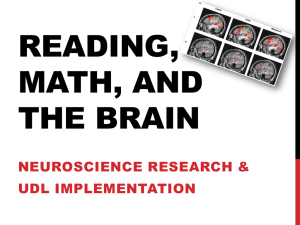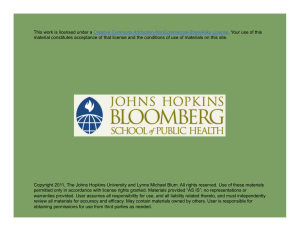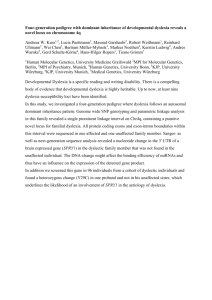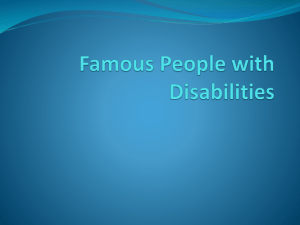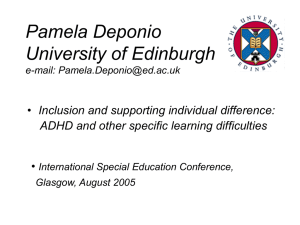ADHD & Dyslexia - GGHS Psychology
advertisement
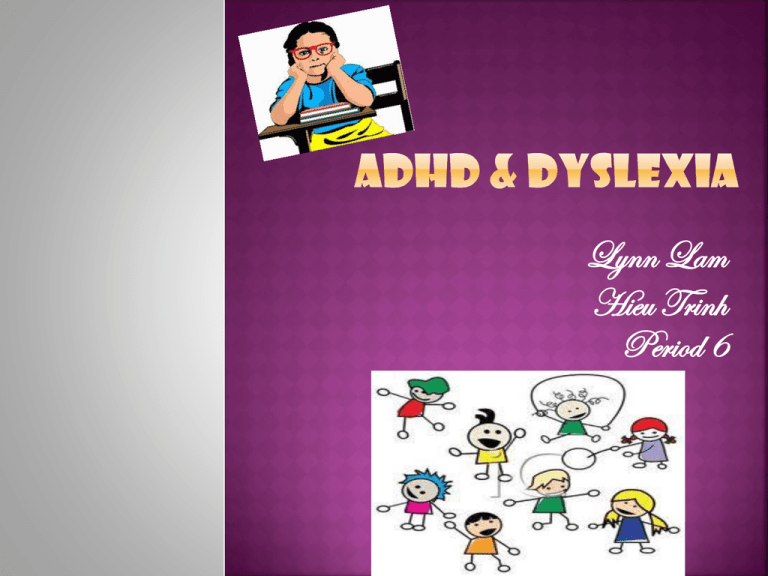
Lynn Lam Hieu Trinh Period 6 David was a thirteen year old, eighth grade student who had reading and math skills one to two years below grade level. He was failing every subject and seemed destined to repeat the eighth grade. His teachers described him as disruptive and oppositional in class and stated that he had difficulty paying attention during structured and unstructured activities. The school administrators contacted his grandparents and suggested that he was likely suffering from an Attention-Deficit Hyperactivity Disorder (ADHD). A developmental disability involving short attention, distractibility, and extreme difficulty in remaining inactive for any period. Genetic influence Exposure to environmental toxins (e.g. lead, PCBs) Babies with low birth weight Brain injuries Food additives (e.g. artificial coloring, sugar, preservatives) Alcohol or drug abuse during pregnancy Stimulant ADHD medications (e.g. Ritalin, Adderall) Behavioral therapy - Learning to give oneself praise for acting in a desired way, such as controlling anger or thinking before acting - help organizing tasks or completing schoolwork, or working through emotionally difficult events. About 3 to 5% of school-age children have ADHD. Boys are 3 or 4 times as likely to have ADHD than girls. Famous people who have ADHD: Justin Timberlake, Will Smith, Michael Phelps, Jim Carey, Paris Hilton People with ADHD tend to suffer from drug abuse. http://www.nimh.nih.gov/health/publicatio ns/attention-deficit-hyperactivitydisorder/complete-index.shtml http://www.webmd.com/addadhd/guide/adhd-causes www.aboutourkids.org Josh becomes very frustrated when his homework assignments are written on the white eraser board in black small letters. Josh sits toward the back of the room in a cluster of five desks pushed together. The teacher writes their assignments on the eraser board approximately four minutes before the last bell rings. Josh has a very hard time putting down the numbers and letters on his assignment page in the proper order. The more confused he becomes the more angry he becomes. He tries very hard but cannot finish in a timely fashion and understand the directions. A learning disability that can hinder a person’s ability to read, write, and spell. Symptoms: - Letter and number reversals - Difficulty copying from a board or book - Inability to remember content clearly - Problems with spatial relationships - Uncoordinated & problems with organized sports Trauma dyslexia – caused by a brain trauma or injury Primary dyslexia - dysfunction the left side of the brain (cerebral cortex); hereditary Secondary/developmental dyslexia – caused by hormonal development during the early years of fetal development. There is no real cure for dyslexia If needed, the child should be sent to a special school that will provide an appropriate treatment plan including: - systematic study of phonics - multisensory reading approaches - Most important: attitudes of adults around the child. One in five students, or 15-20% of the population has dyslexia. Dyslexia is the most common learning disorder. Famous people with dyslexia: Tom Cruise, Orlando Bloom, Steve Jobs, Walt Disney, Thomas Edison, Pablo Picasso, Albert Einstein Dyslexics do NOT see letters backward. http://www.dyslexia-test.com/famous.html http://www.medicinenet.com/dyslexia/artic le.htm#1whatis http://athome.readinghorizons.com/commu nity/blog/50-interesting-facts-aboutdyslexia/
